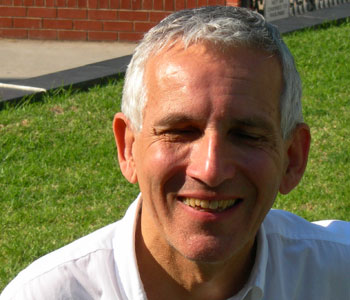Gregory D. Koblentz
Living Weapons: Biological Warfare and International Security
Cornell University Press
255 pages, 9 x 6 inches
ISBN 978 0801447686
The proliferation of biological weapons—BW for short—to states or terrorists is one of the most pressing security issues of the twenty-first century. At a time when the United States enjoys overwhelming conventional military superiority, biological weapons may be one of the more attractive means of waging asymmetric warfare by less powerful states hoping to challenge the status quo.
At the same time, the considerable overlap between the equipment, materials and knowledge required to develop biological weapons, conduct civilian biomedical research, and develop biological defenses creates a multiuse dilemma. This dilemma limits the effectiveness of verification, hinders civilian oversight, and complicates threat assessments. In addition, advances in the life sciences have the potential to heighten the lethality and availability of biological weapons.
My book, Living Weapons: Biological Warfare and International Security, provides a comprehensive analysis of the unique challenges that biological weapons pose for international security from the perspectives of arms control, deterrence, civil-military relations, terrorism and intelligence. To understand the strategic consequences of the proliferation of biological weapons, I draw on insights from theories of international relations and security studies. The book uses case studies on the American, Soviet, Russian, South African, and Iraqi biological weapons programs to enhance our understanding of the special challenges posed by these weapons.
I also examine the aspirations of terrorist groups such as Aum Shinrikyo and Al-Qaeda to develop these weapons and the obstacles they have faced. I argue that biological weapons will continue to threaten international security until defenses against such weapons are improved, governments can reliably detect biological weapon activities, the proliferation of materials and expertise is limited and international norms against the possession and use of biological weapons are strengthened.

In 1969 the United States abandoned its offensive BW program, and in 1972 biological weapons became the first class of weapons to be completely outlawed by an international treaty, the Biological Weapons Convention. Biological weapons, however, did not disappear.
Biological weapons are the least well understood of the so-called weapons of mass destruction, or WMDs. Despite the growing awareness of the threat posed by biological weapons, the history of biological warfare and the unique security challenges posed by biological weapons remain unfamiliar to much of the public, academia, and government.
During the cold war, the focus on nuclear weapons was understandable. The destructive power of nuclear weapons had been established with horrific results during World War II, and postwar advances generated even more powerful weapons. Nuclear weapons formed the core of the superpowers’ strategic arsenals and were integral to maintaining the “balance of terror” between them. In addition, these weapons were deployed or under development in zones of potential conflict stretching from Europe to the Middle East to Asia.
In contrast, biological weapons have never been used openly on the battlefield and their development has always been conducted under the strictest secrecy. In addition, in 1969 the United States abandoned its offensive BW program, and in 1972 biological weapons became the first class of weapons to be completely outlawed by an international treaty, the Biological Weapons Convention (BWC). Thereafter, biological weapons, never high on the list of priorities, slipped even lower. Biological weapons, however, did not disappear with the signing of the BWC.
The international security implications of the biotechnology revolution and the spread of biological weapons began receiving increased attention in the 1990s following revelations about the Soviet and Iraqi BW programs, continued advances in the life sciences, and the emergence of more lethal terrorist groups interested in weapons of mass destruction. This renewed attention, however, has not always translated into a greater understanding of the dangers posed by biological weapons. Government officials and academics frequently lump biological weapons together with nuclear and chemical weapons under the category of WMD or discuss the “chem-bio” threat.
Terms such as WMD and “chem-bio” have hindered our understanding of the international security implications of biological weapons. The widespread use of these labels has obscured important differences between these different weapons and the strategic consequences of their proliferation.
Unlike nuclear and chemical weapons, biological weapons are composed of, or derived from, living organisms. This unique characteristic of biological weapons is at the heart of many of the security challenges posed by them. The diversity of pathogenic microorganisms and toxins that can be used as weapons provides the attacker with flexibility in planning its attack. The sheer number of potential biological warfare agents complicates the task of the defender. The ability of pathogens to replicate themselves inside a host enables an attacker to use only a small amount of a biological weapon to inflict mass casualties. The overlap between the equipment, knowledge, and materials required to develop biological weapons and to conduct civilian biomedical research or develop biological defenses limits the effectiveness of arms control and verification measures and complicates intelligence collection and analysis.
The study of biological weapons reveals a number of paradoxes and dilemmas. Biological weapons are widely feared, yet rarely used. Biological weapons were the first weapon prohibited by an international treaty, yet the proliferation of these weapons increased after they were banned in 1972. Biological weapons are frequently called “the poor man’s atomic bomb,” yet they cannot provide the same deterrent capability as nuclear weapons. One of the goals of my book is to explain the underlying principles of these apparent paradoxes.
On February 5, 2003, Secretary of State Colin Powell issued a dire warning to the United Nations Security Council in an effort to convince the international community that Iraq possessed weapons of mass destruction in violation of Security Council resolutions. He stated: “There can be no doubt that Saddam Hussein has biological weapons and the capability to rapidly produce more, many more. And he has the ability to dispense these lethal poisons and diseases in ways that can cause massive death and destruction.”
As we know now, these conclusions were not based on solid intelligence. In fact, after the March 2003 U.S.-led invasion of Iraq, investigation of Iraq’s WMD programs has shown that every single U.S. allegation regarding Iraqi biological weapon activities was wrong. How did the United States get so much so wrong about Iraq’s biological warfare program?
Although the severity of this intelligence failure was a shock, intelligence agencies have a long track record of either underestimating or overestimating their adversaries’ BW capabilities and intentions. The United States also encountered serious problems assessing the Iraqi BW program before the 1991 Gulf War and the Soviet BW program throughout the cold war—although our intelligence on these programs was better than commonly understood.
States developing biological weapons have strong incentives to keep their plans and capabilities secret due to legal, normative and strategic reasons. As a result, these states engage in extensive deception-and-denial operations to conceal the existence and capabilities of offensive programs. Properly assessing the information that is collected is complicated by the multiuse nature of biotechnology; the overlap between offensive, defensive, and civilian activities; and the lack of easily detectable signatures for offensive programs. As a result, biological weapons are a notoriously difficult target for intelligence agencies.
Good intelligence is the first line of defense against biological weapons. Conversely, poor intelligence complicates efforts to develop and deploy defenses, engage in diplomacy, conduct inspections, and undertake military operations. Chapter 4 of the book describes the challenges in collecting and analyzing intelligence on biological weapons, examines the reasons for successes and failures in the Iraq and Soviet cases, and provides recommendations on how to prevent such intelligence failures in the future.

Good intelligence is the first line of defense against biological weapons.
In his announcement in 1969 that the United States was terminating its offensive biological weapons program, President Richard Nixon stated, “Mankind already carries in its own hands too many of the seeds of its own destruction.” Over the past sixty years, the world has avoided the worst consequences of biological warfare. World War II ended before the United States perfected its ability to mass-produce bombs filled with anthrax spores for use against Japan. The revolution in biology and biotechnology blossomed in the United States free of any military interest or influence because the country had already abandoned its offensive program. The Soviet Union, which aggressively sought to apply advances in biotechnology to biological warfare, collapsed before it was able to significantly achieve this objective. Will the world be so lucky at the next turning point? Maximizing the benefits that can be derived from advances in biotechnology and biomedical research while minimizing the risk of these advances being misused for hostile purposes will be one of this century’s most enduring challenges.




We don't put paywalls. We don't distract you with ads. We don't sell your data.
Please help to keep this running!